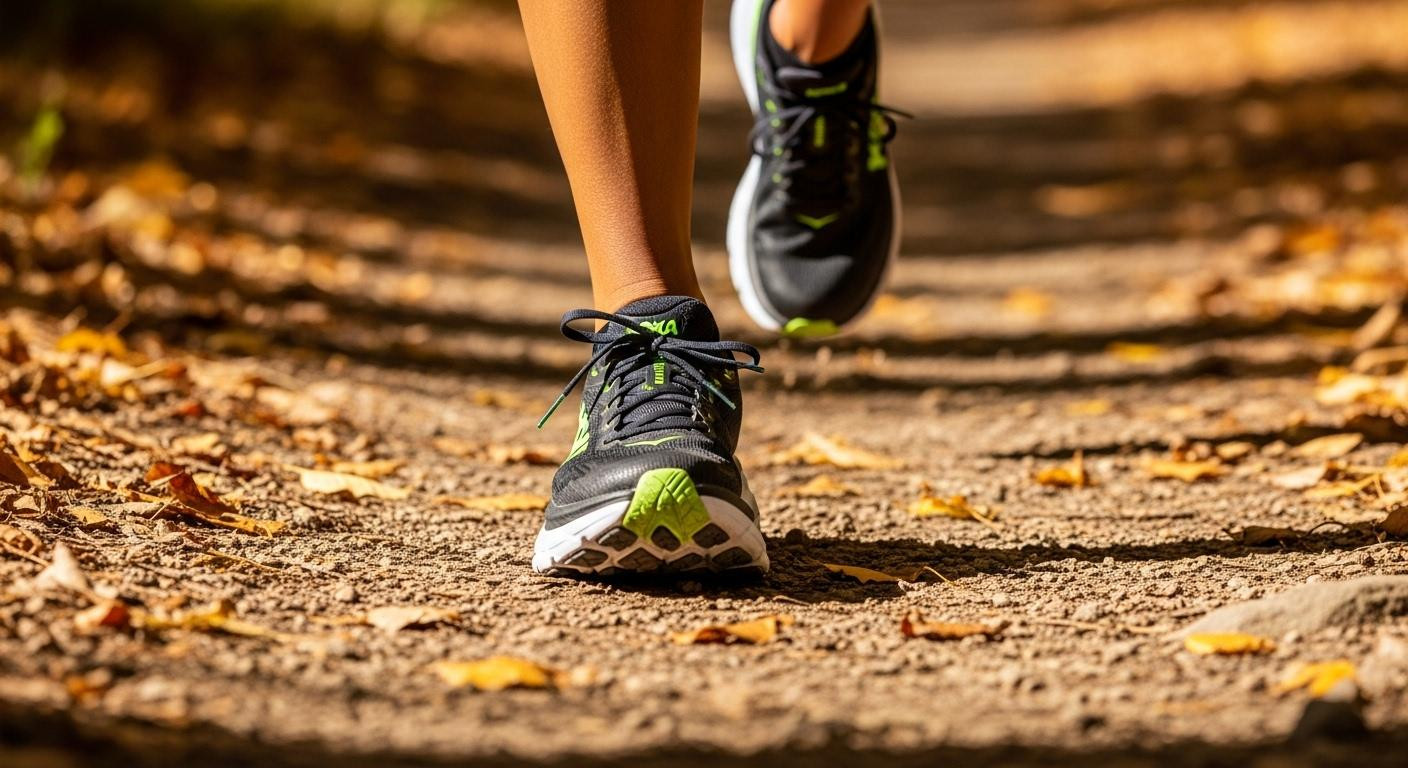The running world witnessed a seismic shift when HOKA introduced maximalist shoes with oversized midsoles. These chunky-soled runners defied conventional wisdom about stability and performance. Meta-Rocker geometry transforms how feet strike the ground. The curved sole design creates a rocking motion that reduces muscle fatigue by 18% compared to traditional flat shoes.
The Meta-Rocker revolution: how curved geometry changes your foot strike
HOKA’s signature curved sole mimics a rocking chair’s natural motion. The Meta-Rocker design literally rolls your foot through each stride cycle. Early-stage rockers position the pivot point under the balls of your feet for speed.
Late-stage rockers place the pivot closer to your toes for stability. Performance models like the Rocket X 3 use early rockers to generate propulsion. Daily trainers like the Clifton 10 employ late-stage geometry for smooth transitions.
Most HOKA models feature a minimal 4-7mm heel drop compared to traditional 10-12mm drops. This reduced height differential promotes natural foot strike patterns. The geometry reduces strain on your Achilles tendon during extended runs.
Why thick doesn’t mean unstable: the Active Foot Frame engineering
The cradle effect: how the foot frame technology works
HOKA’s Active Foot Frame creates a molded cradle around your foot. This deep cupping design provides security despite 38mm+ stack heights in models like the Bondi 9. The frame technology addresses stability concerns that plague other maximalist designs.
Traditional maximalist shoes often feature rigid heel counters for support. HOKA’s Bondi series uses a soft heel counter approach that maintains comfort. The frame system distributes weight evenly across the midsole platform.
SwallowTail heel: 15% more landing surface
The distinctive forked heel geometry creates broader impact distribution. SwallowTail technology increases landing surface area by 15% compared to rounded heels. This innovation particularly benefits heel-striking runners who need stable ground contact.
The split heel design appears in models like the Kawana and Gaviota series. Visual inspection reveals the dramatic difference from traditional curved heel shapes. Impact forces spread across the broader landing zone.
From ultramarathons to healthcare: applications across intensity levels
Performance validation: Rocket X 3 and Cielo X1 2.0
HOKA’s race models integrate carbon plates with maximalist cushioning. The Rocket X 3 retails for $190 with World Athletics compliant 38mm stack height. Premium racing shoes like the Cielo X1 2.0 cost $275 with PEBA foam technology.
Elite validation proves maximalist design works at competitive levels. Carbon plate integration provides propulsion without sacrificing the signature cushioning. Race performance improvements demonstrate real-world application success.
Daily comfort: Clifton 10 and Mach 6 dominance
The Clifton 10 costs $150 and delivers exceptional daily training value. Stack heights of 29mm heel and 24mm forefoot provide substantial cushioning. Healthcare workers report significant foot fatigue reduction during 12-hour shifts.
Mach 6 models weigh just 8.4 ounces despite generous cushioning. The lightweight construction defies stereotypes about bulky maximalist shoes. Senior runners particularly benefit from the joint-friendly design approach.
The 2025 maximalist tipping point: trend becomes standard
HOKA achieved billion-dollar brand status as maximalist shoes gained mainstream acceptance. November 2025 collections feature explosive colorways that appeal beyond performance runners. Lifestyle crossover models target urban walking and workplace comfort.
Sports scientists studying athletic performance confirm maximalist benefits. Clinical research demonstrates 15% reduction in calf and Achilles strain with rocker-bottom footwear. The technology once dismissed as gimmicky now influences entire industry design standards.
Professional athletes increasingly choose maximalist racing shoes for competition. Premium shoe care investments protect these high-performance assets. World Athletics regulations legitimize 40mm stack heights in official competition.
Your questions about how HOKA shoes are changing running shoes design answered
Do maximalist shoes actually prevent injuries?
Research shows mixed but generally positive results for injury prevention. Impact force reduction is scientifically validated through biomechanical testing. Individual gait patterns determine specific benefits, making professional fitting crucial for optimal outcomes.
How does HOKA compare to Nike and ASICS maximalist models?
HOKA pioneered the maximalist category with first-mover advantages. Nike ZoomX technology focuses on energy return through softer foam compounds. ASICS FlyteFoam emphasizes lightweight responsiveness over pure cushioning volume. Meta-Rocker geometry remains unique to HOKA’s design philosophy.
Which HOKA model fits my running style?
Clifton series works for 5-15 mile daily training runs. Speedgoat models excel on technical trail terrain with aggressive traction. Rocket X provides race-day speed with carbon plate propulsion. Bondi delivers maximum cushioning for walking and recovery applications.
Dawn breaks over the Pacific Northwest trail. Frost clings to Douglas fir branches overhead. Your HOKA Speedgoat 6 compresses then rebounds with each calculated step. The curved sole rolls forward naturally through technical terrain. What felt awkward in the store now feels like controlled flight.
